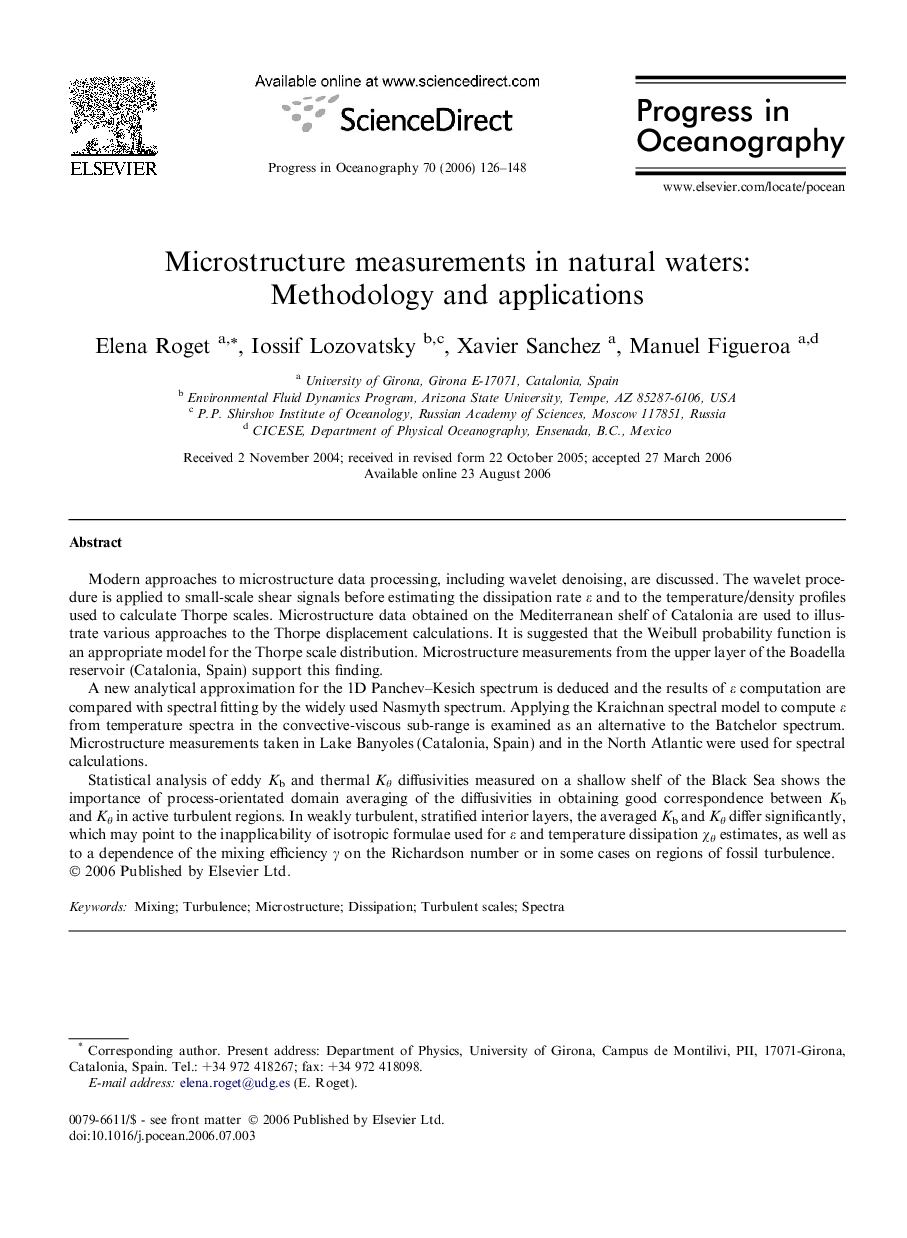| Article ID | Journal | Published Year | Pages | File Type |
|---|---|---|---|---|
| 4553943 | Progress in Oceanography | 2006 | 23 Pages |
Modern approaches to microstructure data processing, including wavelet denoising, are discussed. The wavelet procedure is applied to small-scale shear signals before estimating the dissipation rate ε and to the temperature/density profiles used to calculate Thorpe scales. Microstructure data obtained on the Mediterranean shelf of Catalonia are used to illustrate various approaches to the Thorpe displacement calculations. It is suggested that the Weibull probability function is an appropriate model for the Thorpe scale distribution. Microstructure measurements from the upper layer of the Boadella reservoir (Catalonia, Spain) support this finding.A new analytical approximation for the 1D Panchev–Kesich spectrum is deduced and the results of ε computation are compared with spectral fitting by the widely used Nasmyth spectrum. Applying the Kraichnan spectral model to compute ε from temperature spectra in the convective-viscous sub-range is examined as an alternative to the Batchelor spectrum. Microstructure measurements taken in Lake Banyoles (Catalonia, Spain) and in the North Atlantic were used for spectral calculations.Statistical analysis of eddy Kb and thermal Kθ diffusivities measured on a shallow shelf of the Black Sea shows the importance of process-orientated domain averaging of the diffusivities in obtaining good correspondence between Kb and Kθ in active turbulent regions. In weakly turbulent, stratified interior layers, the averaged Kb and Kθ differ significantly, which may point to the inapplicability of isotropic formulae used for ε and temperature dissipation χθ estimates, as well as to a dependence of the mixing efficiency γ on the Richardson number or in some cases on regions of fossil turbulence.
